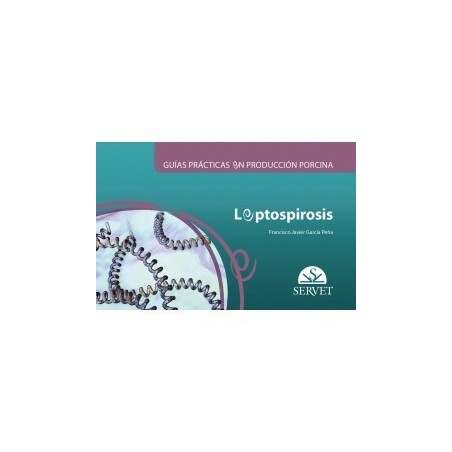




A visual and practical guide on swine leptospirosis aimed at field practitioners to assess and review the current situation of this disease. This book, written by an author with a wide experience, describes the most relevant aspects of the aetiology, epidemiology (with a special emphasis on concepts such as “natural nidi”, maintenance host and accidental host), pathogenesis, clinical picture, lesions, diagnosis (particularly the interpretation of the results of the diagnostic tests performed), treatment and control of the disease. The book includes numerous visual resources that facilitate the understanding of the text.
Francisco Javier García Peña
Francisco Javier García Peña is currently working as a public health inspector (products for human consumption) at the Barajas Airport Border Inspection Post, Madrid. He graduated in biological sciences in 1982 and in veterinary medicine in 1986 from the Complutense University of Madrid (UCM).
He worked at the Department of Bacteriology 2 at the Central Veterinary-Animal Health Laboratory (LCV) of Algete (Spanish Ministry of Agriculture and Fisheries, Food and Environment), Madrid, from 1992 to 2017. Before working at the LCV of Algete, he was professor at the Department of Animal Health (Infectious Pathology) of the Faculty of Veterinary Medicine, UCM for five years. During this period, his research focused mainly on the epidemiology and diagnosis of pleuropneumonia and streptococcal infections in pigs.
At the LCV of Algete, the Department of Bacteriology 2 houses the national research centres on several zoonoses and animal diseases such as campylobacteriosis, leptospirosis, botulism, verotoxigenic Escherichia coli infections, contagious equine metritis, vibriosis and bacterial diseases of fish and bees. His main activity there has therefore been the development and validation of diagnostic techniques for the previously mentioned diseases. In addition, he was the first to describe several bacterial diseases in Spain, such as tularaemia in lagomorphs and rodents, contagious equine metritis or haemorrohagic septicaemia in the deer.
After a brief visit at the Leptospirosis Reference Laboratory of the World Organisation for Animal Health (AFBI Veterinary Sciences Division, Stormont, Belfast), he started conducting research on this disease in several animal species, both domestic and wild. In collaboration with the Faculty of Veterinary Medicine of the UCM, NEIKER (Basque Institute of Agricultural Research and Development), CENSYRA (Centre for Animal Selection and Reproduction) in the Spanish region of Asturias, and other companies specialised in animal health, he has conducted prevalence studies in cattle, pigs, deer and wild boars, and studied outbreaks in production animals with the isolation of the strains involved and the determination of the serovars maintained by wild rodents.
His current work mainly focuses on his participation in the Group for the Study of Wild Animal Medicine and Preservation (GEMAS), whose purpose is to study the health status of the Spanish native fauna and the interrelationships of some diseases between wild and domestic animals and human beings.
1. Aetiology
2. Epidemiology
Pigs as hosts for Leptospira spp.
Geographical distribution and prevalence
Sources of infection, transmission and risk factors
Health implications
3. Pathogenesis, clinical presentation and lesions
Pathogenesis
Clinical presentation
Lesions
Financial impact
4. Diagnosis
When should leptospirosis be suspected?
Samples sent to the laboratory
Laboratory diagnostic methods
Objective of diagnosis
Interpreting the results
5. Treatment and control
Treatment
Control
References
Expected Date: 04/26/2024
Comments